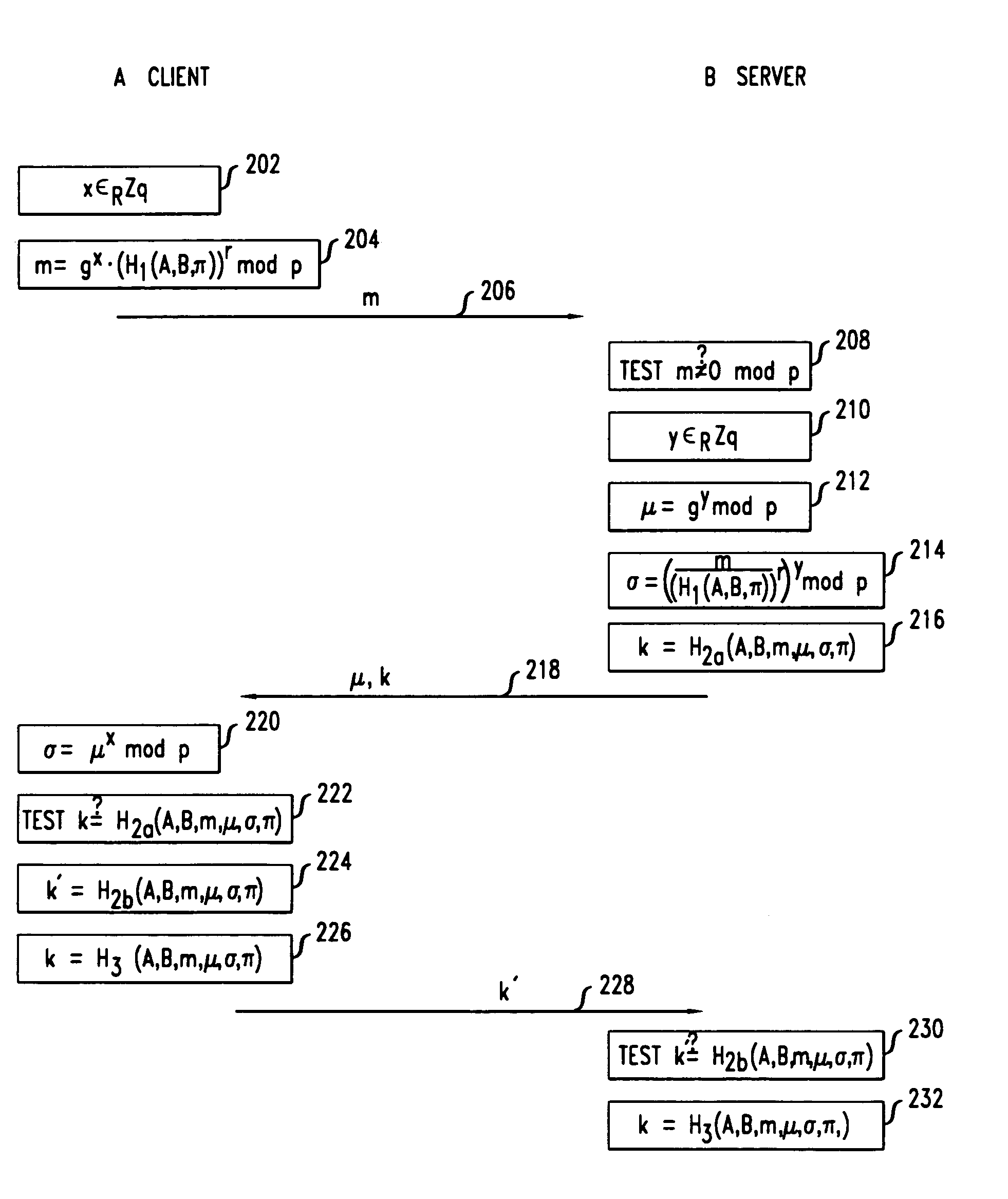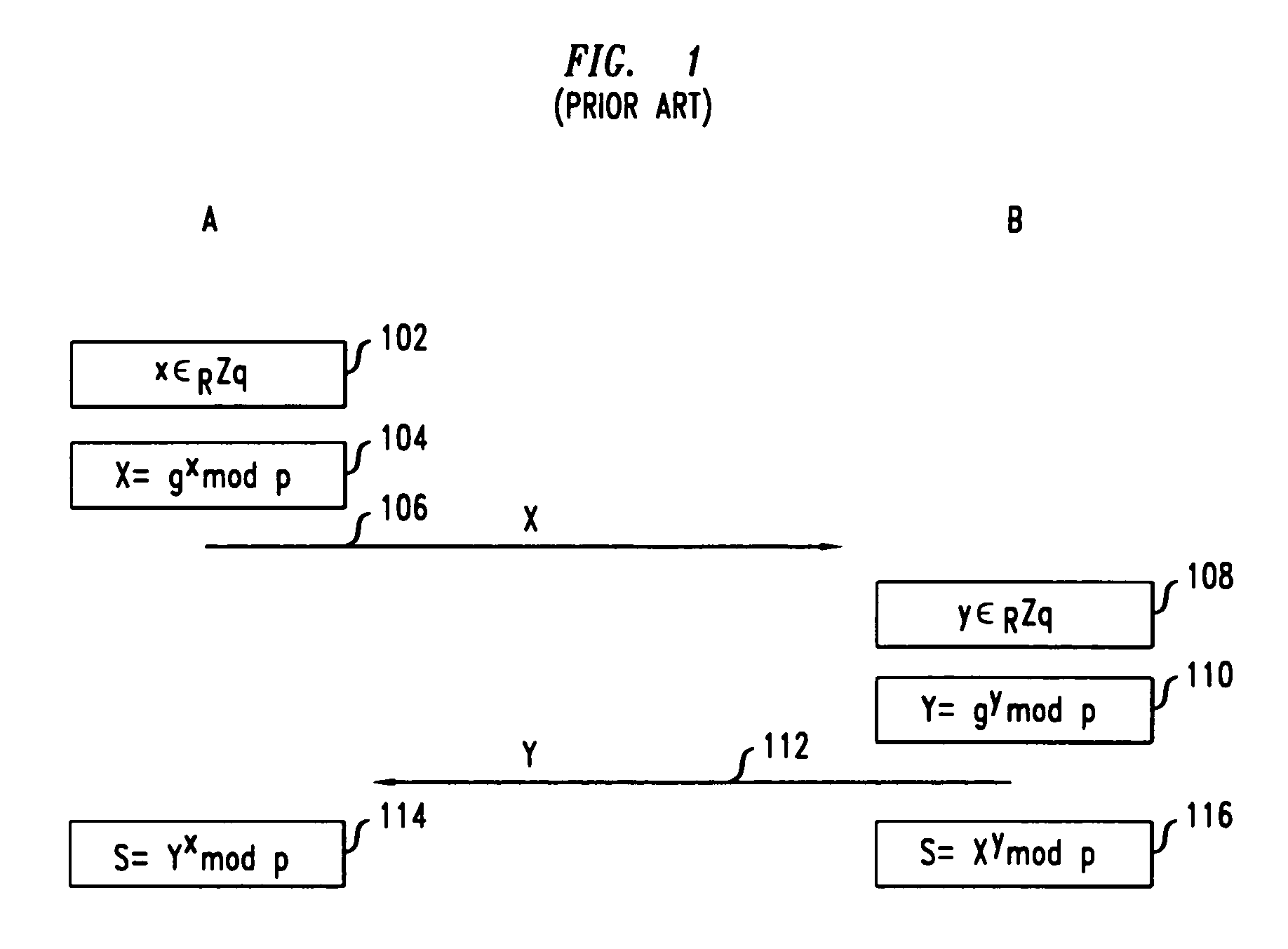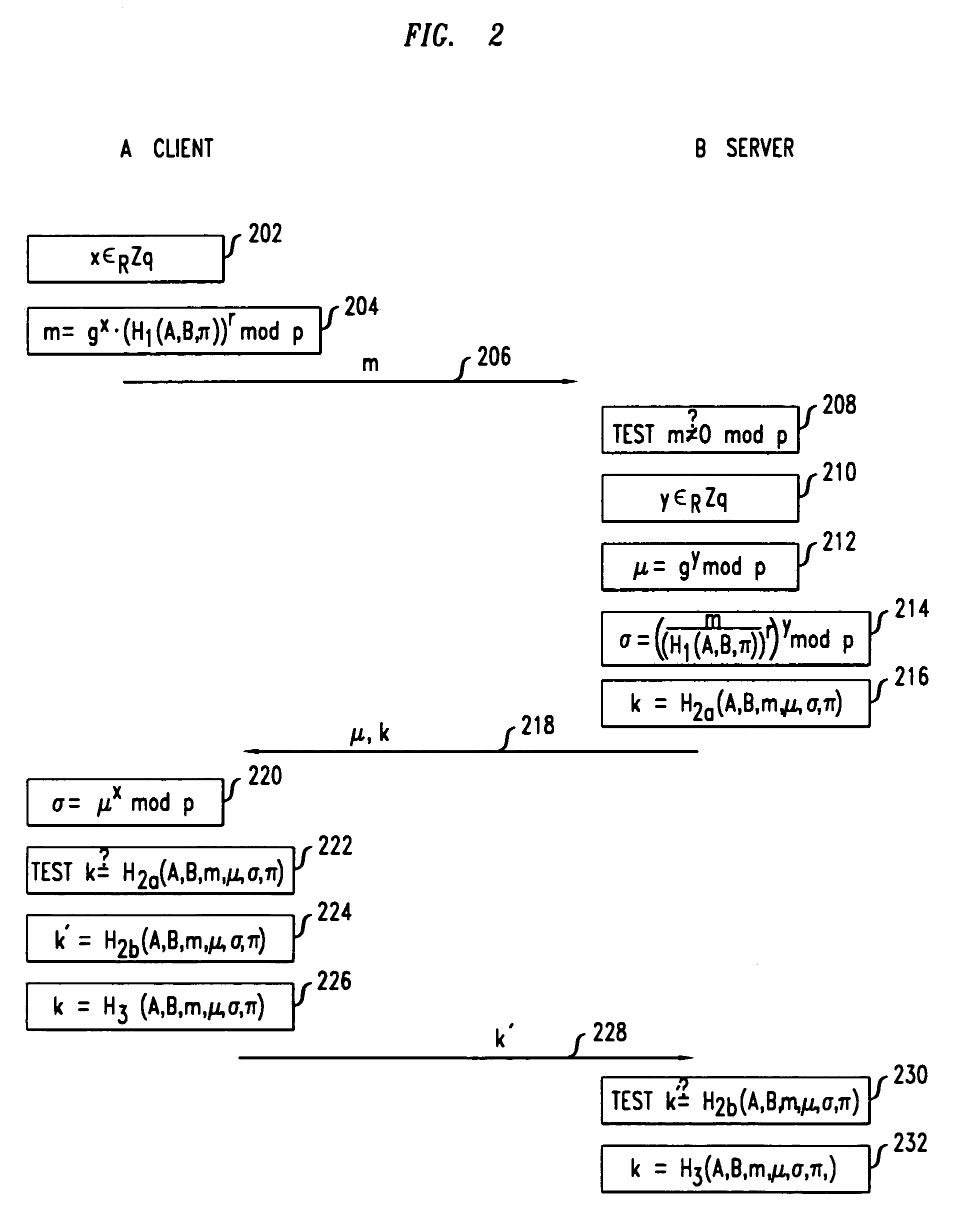Secure mutual network authentication and key exchange protocol
a mutual network and key exchange technology, applied in the field of passwordonly secure mutual network authentication and key exchange protocol, can solve the problems of inability to generate the correct secret session and inability to communicate between the parties
- Summary
- Abstract
- Description
- Claims
- Application Information
AI Technical Summary
Benefits of technology
Problems solved by technology
Method used
Image
Examples
first embodiment
[0038]A mutual authentication and key exchange protocol in accordance with the invention is shown in FIG. 2. Steps shown on the left side of the figure are performed by a first party A, and steps shown on the right side of the figure are performed by a second party B. Typically, A will be a client machine and B will be a server machine. However, this is not required, and A and B are labeled as client and server respectively only as an example to show the typical case, but it is to be understood that the invention is not limited to the case where A and B are client and server, but instead the invention is applicable to any two parties A and B. Arrows represent communication between the parties. In accordance with the protocol, the server will authenticate itself to the client and the client will authenticate itself to the server. After both sides have authenticated, each will generate a secret session key which may be used for subsequent secure communication.
[0039]Prior to initiation...
second embodiment
[0053]the invention will now be described in conjunction with FIG. 3. In this embodiment, the authentication between the parties is implicit, which means that there are no steps taken by either party to explicitly authenticate the other party. Rather, each party attempts to generate the session key, but if either party does not have the appropriate password, then that party will be unable to generate the correct session key and communication between the parties will not be possible. Referring now to FIG. 3, steps 302 through 310 correspond to steps 202 through 210 of FIG. 2. In step 312 the server computes parameter μ as μ=gy·(H2(A,B,π))r mod p, which is similar to step 204 described above in conjunction with FIG. 2. As described above in conjunction with step 204, in effect, step 312 results in combining a function of at least the password with the Diffie-Hellman value gy by performing the group operation on the function of at least the password and the Diffie-Hellman value gy.
[005...
PUM
 Login to View More
Login to View More Abstract
Description
Claims
Application Information
 Login to View More
Login to View More - R&D
- Intellectual Property
- Life Sciences
- Materials
- Tech Scout
- Unparalleled Data Quality
- Higher Quality Content
- 60% Fewer Hallucinations
Browse by: Latest US Patents, China's latest patents, Technical Efficacy Thesaurus, Application Domain, Technology Topic, Popular Technical Reports.
© 2025 PatSnap. All rights reserved.Legal|Privacy policy|Modern Slavery Act Transparency Statement|Sitemap|About US| Contact US: help@patsnap.com



